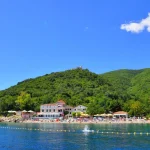Based on the current state of reservations, the largest Croatian hotel houses are announcing an excellent postseason, especially in September, reports HRTurizam.
Although the end of school holidays in Croatia in our most important countries will significantly reduce the number of guests in family accommodation and camping, announcements for hotel accommodation are excellent.
“We are especially looking forward to the return of groups, whether it is events, congresses, or trips of special interest. Following the epidemiological instructions received from the national and local civil protection headquarters, careful preparation is the key to successfully implementing the stay of larger groups of tourists. It is estimated that based on market interest, about 800 hotels (80-90% of the number of hotels now open) would continue to operate during September and thus further improve the results achieved so far,” said Veljko Ostojić, director of the Croatian Tourism Association.
Croatia remains the epidemiologically safest EU country in the Mediterranean. This is confirmed by comparisons of all relevant public health institutes. For example, according to the 14-day incidence, the European Center for Disease Prevention and Control ECDC ranks Croatia 8th on the list of EU members in terms of security, with a significantly better epidemiological situation than other Mediterranean countries.
The German Robert Koch Institute, which monitors Croatia by counties, did not put any county in Croatia on the list of risk areas in the last update on August 20, while all Mediterranean countries have been on that list for weeks. Also, on the European map updated daily by the American Johns Hopkins University, according to the rolling 7-day average of new cases per 100,000 inhabitants, Croatia has a significantly better situation than its Mediterranean competition.
Two counties that attract a total of more than half of tourists to Croatia, Istria and Primorje-Gorski Kotar County, also have a better epidemiological situation than the national average. Istria County has a 14-day incidence of 46 new cases per 100,000 inhabitants, and Primorje-Gorski Kotar County has an incidence of 55, making these two counties a safer environment for most tourists from Europe than they have in their home countries.
On Wednesday, 677 new cases were recorded, so the number of active cases in Croatia on Wednesday was a total of 2,951. Among them, 356 patients are in hospital, of which 46 are on a respirator. In the past 24 hours, 282 people recovered, and 10,453 were tested.
The jump in new cases in Croatia is worrying, and everyone in tourism has been anxiously awaiting Thursday when the new ECDC epidemiological map comes out. Although there is the worry that Croatia will turn red this week, it is certain that such a drastic drop, i.e., the number of tourists, will not happen again, like last year.
However, this year, the context and situation are different, as a large number of the population has been vaccinated or contracted Covid-19. Additionally, test centers have been secured, and, regardless of the spread of the Delta variant, much more is still known about the coronavirus. Therefore, the biggest problem may be caused by the possible need for quarantine, which would certainly lead to a drastic decline in tourists in Croatia.
For all you need to know about coronavirus specific to the Republic of Croatia, including test centres, vaccination points, and travel and border rules, make sure to check out and bookmark our dedicated COVID-19 section and select your preferred language.










